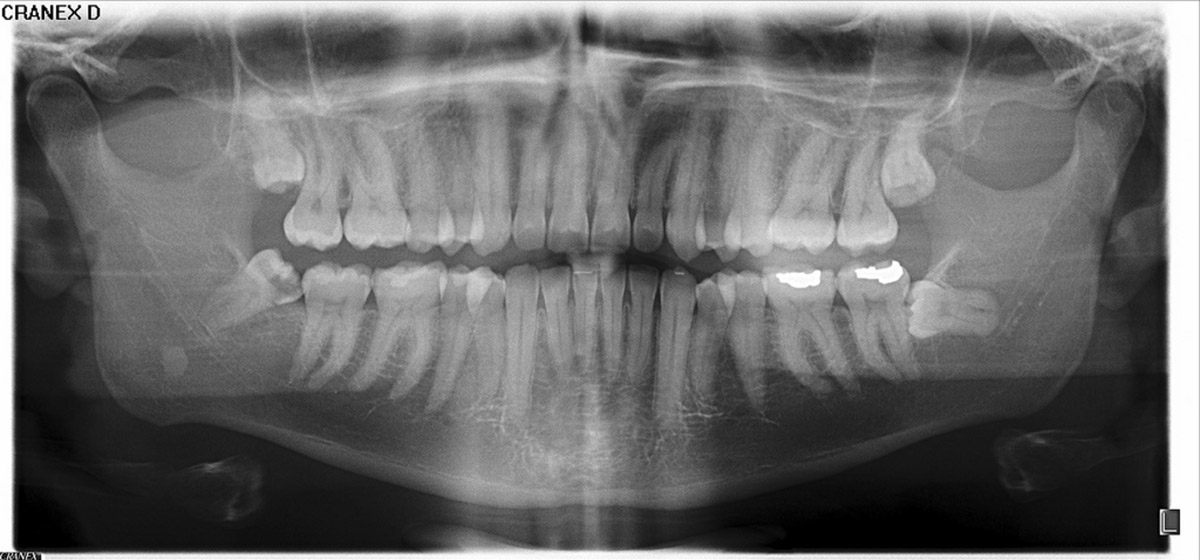Table of Contents
Dentigerous Cyst
A dentigerous cyst is a type of cyst that is associated with un-erupted teeth in the jaws. The mechanism that leads to the development of this cyst is well understood. It involves the developing cells around the crown of the teeth to proliferate and to start to accumulate fluid between themselves the crown of the tooth.
Thus, characteristically, this type of cyst will always be attached to a tooth. Since the cyst is developmental in origin and does not have any inflammatory component, it is frequently completely asymptomatic.
A dentigerous cyst can grow to a very large size, sometimes taking up almost half of the jaw. The diagnosis of this cyst is usually done during routine X-rays taken during a check-up or during treatment for some other involved tooth.

A lot of doctors advise removal of all un-erupted teeth due to the risk of developing a dentigerous cyst, however, it should be remembered that the chances of this happening are close to no higher than one percent.
Since the cyst can grow to a very large size, it can actually weaken the entire jaw structurally and make it more prone to develop fractures.
Eruption Cyst
An eruption cyst is a kind of dentigerous cyst that occurs in a very specific kind of situation. Here the tooth erupts through the bone but remains lodges inside the gingival tissue. The cyst around the neck of the tooth frequently becomes blue in color because of bleeding into the cyst and this color permeates through the gingival to become visible outside.
It is because of this reason that the cyst is erroneously referred to as an eruption hematoma as well. The good thing about the cyst is that it is very short lived and does not require any treatment whatsoever. The cyst resolves on its own as soon as the tooth erupts into the oral cavity.
Residual Cyst
As the name suggests, a residual cyst is a periapical cyst that has not resolved even though the tooth with which it was associated has been extracted. This happens in a small number of cases and when it does, it is an indication that the cyst needs to be surgically removed.
READ Teeth Whitening: Is it a scam?
Conclusion
The appearance of cysts is very similar to tumors of the jaw, at least on radiographic appearance. As a result, if the doctor is unsure whether the lesion on the radiograph is a cyst or a tumor, it is better to err on the side of caution and order a biopsy.
Better imaging techniques and the use of cone beam CT scans has also made it easier to see the entire extent of the cyst, the structures it is affecting, any structures present inside the cyst and plan the best approach for treatment.
Also, cysts are an entirely different entity from tumors and do not indicate any likelihood of a person developing/ not developing a tumor in the future.
- dentistry.umkc.edu/Practicing_Communities/asset/Jcysts.pdf
- en.wikipedia.org/wiki/Cysts_of_the_jaws
- Photo courtesy of dvanzuijlekom: www.flickr.com/photos/dvanzuijlekom/9393464542/
- Photo courtesy of dvanzuijlekom: www.flickr.com/photos/dvanzuijlekom/9393464542/


Your thoughts on this